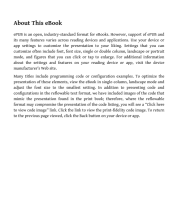Infrastructure Security - IPv6 First-Hop Security
7 important questions on Infrastructure Security - IPv6 First-Hop Security
What is the Binding Table used for IPv6 First-Hop Security?
- The L2 binding table is a database with IPv6 neighbors.
- Contains information like the link-layer address and the prefix binding
- used by other IPv6 First-Hop Security features to prevent snooping and redirect attacks.
What is IPv6 Snooping?
- A feature that captures IPv6 traffic to populate the Binding Table
- Analyzes the IPv6 neighbor discovery messages as well as DHCPv6 messages
- Can block Router Advertisements or DHCP replies
- Prerequisite for all other IPv6 First-Hop security features
What is Router Advertisement (RA) Guard?
- Used to block or reject unwanted IPv6 Router Advertisements
- A RA Guard policy is created which is applied to an interface
- Configured on an inbound interface
- Two modes: Host mode and Router mode
- No protection for IPv6 tunneled traffic
- Only supported when TCAM is programmed
- Not supported on EtherChannel members or Trunk ports with Merge Mode.
- Higher grades + faster learning
- Never study anything twice
- 100% sure, 100% understanding
What is DHCPv6 Guard?
- Prevents Reply and Advertisement messages from unauthorized DHCPv6 servers.
- Classifies messages in to 3 DHCP types: Client, Server and Relay
- switches all Clients messages and Server only when device role is Server.
- A DHCPv6 Guard policy is created and attached to an interface
What is IPv6 Source Guard?
- Layer 2 snooping interface feature for validating source of IPv6 traffic
- Can block/drop traffic from unknown source.
- Source is unknown when not in the binding table
- Source learned through ND inspection or IPv6 Address Gleaning, therefore relies on IPv6 snooping being configured.
What is IPv6 Destination Guard?
- Can filter IPv6 traffic based on destination address
- Requires binding table
- Can block NDP resolution for addresses not found in the binding table
- By default blocks traffic coming for an unknown destination.
What is IPv6 Prefix Guard?
- Used on ingress interfaces
- Discovers ranges of address on a specific link
- Denies traffic with a correct address but topologically incorrect.
The question on the page originate from the summary of the following study material:
- A unique study and practice tool
- Never study anything twice again
- Get the grades you hope for
- 100% sure, 100% understanding































